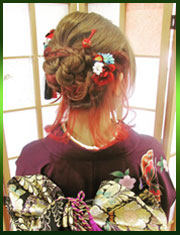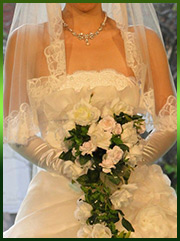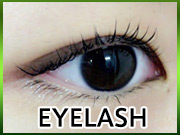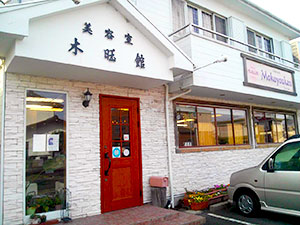dutch golden age still lifeinsulated grocery bag target
Cities expanded greatly as the economy thrived. [14] Seventeenth-century Dutch society dictated that children should first begin to learn religion at home. That economic flourishing spread across society with financial innovations such as the publicly held company, which allowed broad swaths of society to participate in the profits thrown off by emerging multinational corporations such as the Dutch East India Company. Reviews STILL LIFE AND TRADE IN THE DUTCH GOLDEN AGE julie berger hochstrasser Yale University Press 2007 d35.00 $40.00 411 pp. Soldiers at Leisure: The Guardroom Scene in Dutch Genre ... Many books on religion, philosophy, and science that might have been deemed controversial abroad were printed in the Netherlands and secretly exported to other countries. Surrealism and Painting Michele Ahin/Alinakfield. There was a prosperous middle class from the work of trading and manufacturing. Still Life with Oysters and Lemon: On Objects and Intimacy. #ArtSaturday Dutch Golden Age Still Life The Dutch Golden Age of painting spanned the 17th century. In ‘The Art of Still-Life Painting’, art historian Herbert Furst writes: “The ideas commonly governing the constituents of such still-life compositions fall naturally into two categories: those which are associated with peace and plenty, costly food and high living, and those which are linked with their opposites – frugality, mortification, war and death”[21].
The Dutch Golden Age (1575-1675) produced a remarkable outpouring of artistic genius. [19] “It is obvious that the real reason for this picture is the delight which the painter took in the cubic pattern made by the volumes placed one on top of the other and at different angles. These striking pictures reveal much more about Dutch society and capitalist culture of the seventeenth century than has been previously understood, says the author of this. This stunning book presents the very best still lifes produced in the Netherlands at the height of the genre, from the early beginnings in the 16th century, with Pieter Aertsen and Joachim Beuckelaer, to the late highlights in the 18th ... Black in Rembrandt's Time How do the objects in a still life reflect the customs, ideas and aspirations of the time? This is one of the questions which Schneider asks in this book. de Heem (Utrecht 1606-1683 Antwerp) Jan Davidsz. The home was also a place for neighbors, friends, and extended family to interact, further cementing its importance in the social lives of 17th-century Dutch burghers. K. Carpenter First published 1984. Presents the works and historical circumstances of more than 400 Dutch artists The Golden Age by Bob Haak remains the seminal book on the subject of Dutch painting in the seventeenth century. Craen’s palette is comprised of deep greens, bright yellows, muted reds, and ochre; all colours are spread evenly throughout the composition creating a sense of balance and harmony. Craen emphasizes the lines to create sharp edges, such as the crisp contours of the grapes that appear luscious and edible thanks to their bounteous shape and their enticing shininess which surges towards the viewer. Read. Monica de Ruiter, a freelance guide at the Rijksmuseum, explains that the flowers depicted would, in reality, have bloomed at different times of the year. Change ), You are commenting using your Google account. Still life paintings from the Dutch masters often feature ... late 1680s, oil on canvas. [12] “Galileo and his telescope led not only to new astronomical investigations, but caused painters to study the quality and the effects of light.” Furst, The Art of Still Life Painting, 53. Richard Leppert, Art and the Committed Eye, The Cultural Functions of Imagery, 46. Before the Low Countries could be completely reconquered, a war between England and Spain, the Anglo-Spanish War of 1585-1604, broke out, forcing Spanish troops to halt their advances and leaving them in control of the important trading cities of Bruges and Ghent, but without control of Antwerp, which was then arguably the most important port in the world. Portraiture was also popular, but history painting – traditionally the most-elevated genre – struggled to find buyers. Kevin Best is reinterpreting the still life paintings of the Dutch Golden Age, in a new medium: photography. He became most famous for his extravagant, late-seventeenth century paintings of picture-perfect flowers and sumptuous, fruit-laden tables.
In my view, it must be a relatively early work by Craen.” Fred G. Meijer, email interview by Ira Ferris, May 12, 2014. The magnificent still life paintings of the Dutch Golden Age depict tables richly laid with an array of products that attest to the vast scope of the Dutch trade network. In the Dutch Golden Age, the Netherlands’ naval and mercantile power reach new heights. 34 (Autumn, 1998): 176. Dutch Paintings of the Seventeenth Century Merchants who had made their fortune ordered a new house along one of the many new canals that were dug out in and around many cities (for defense and transport purposes), a house with an ornamented façade that befitted their new status. There was a notable dearth of religious painting & religious subjects during this period because it was banned by Calvinism. [11] “The more monumental, open compositions of the Flemish – their brighter palette and richer, ornamental arrangements – were adopted by De Heem in his works of the early forties…” Scott A. Sullivan, “A Banquet-Piece with Vanitas Implications,” The Bulletin of the Cleveland Museum of Art 61, no. The first major examination of Anthony van Dyck's work as a portraitist and an essential resource on this aspect of his illustrious career This landmark volume is a comprehensive survey of the portrait drawings, paintings, and prints of ... Seventeenth century Dutch Republic was a place of remarkable prosperity and intellectual progress. In the countryside, many new castles and stately homes were built; but most of them have not survived. Sex and Drugs Before the Rock ’n’ Rollis a fascinating volume that presents an engaging overview of what it was like to be young and male in the Dutch Golden Age. [21][22] “Laurens Craen,” last viewed May 17, 2014, http://explore.rkd.nl/en/explore/artists/18936. But what makes this book most compelling is Breton's mix of rigorous erudition and visceral passion, his sense of adventure, and his discoveries of many of Modernism's most prominent figures early in their careers. In “Still-Life Paintings in a Consumer Society,” R.G. In the nineteenth century the guardroom scenes became again popular. "Soldiers at leisure" is the first study that defines this type and traces it history and development. Oysters feature in several still life paintings. illus. During this time, a climate of tolerance developed in comparison to other European states with strict censorship restrictions paving the way for the Dutch to become a powerhouse in the book trade. 5 (September, 1988): 14. The paintings represent objects available to wealthy people yet sometimes include an element of fantasy. Jan Brueghel the Younger painted Still Life with Flowers in a Glass during the late-1620s. The artwork features a sizable fly on the table beneath the glass, and a ladybird sits on a waxy leaf. Willem Kalf was born in Rotterdam, in 1619. ... Still-life painting, Dutch > Themes, motives. But while still lifes are generally thought to be devoid of narrative, certain deeper meanings come into focus once you look beyond the metaphors and showy artistic tricks. The prosperous Dutch Golden Age was largely fostered by wealth reaped from overseas trading and colonial ventures. Still Life and Trade in the Dutch Golden Age 作者 : Julie Berger Hochstrasser 出版社: Yale University Press 出版年: 2007-8-23 页数: 320 定价: USD 42.00 装帧: Hardcover ISBN: 9780300100389
The luxury goods in the paintings satisfy the sweet tooth of materialism and symbolism adds substance to the cake. Since then, critics have generally belonged to two opposing schools of thought when it comes to interpreting them. Oil on paper mounted on panel, 270 x 200 mm. Still Life
It was a change that would shape Dutch art—the types of pictures produced, the manner in which they were made and sold, and their appearance. Dutch still life – a collection of some of the best paintings from 12 painters of the Dutch Golden Age (1600-1750). [3] “[Still-life painting], constituted a revolt against the ecclesiastic laws which had governed the manufacture of religious art. The clergy did not have much worldly influence either: the Catholic Church had been more or less suppressed since the onset of the Eighty Years' War with Spain.
[…] Sixteenth and seventeenth century Flemish still life painting can be classified into kitchen, banquet, breakfast, peasant interior, and fish scenes; floral, smoking, flora and fauna, pronk, and illusionist still lifes, the gamepiece, and the Vanita. In Still life with imaginary view, a wooden table, partly covered by a silk cloth, is filled with various items of food and dishware. 1600 1700 Book Review: The 17th century is a Golden Age, a century of unprecedented blossoming in Dutch art and culture. Lovely comment and glad you’ve enjoyed the blog! […] The banquet scene displayed lavish dishes and place settings, crystal and silver; plentiful and sometimes exotic foods were pictured.” Dorothy Mahon, “A New Look at a Seventeenth-Century Dutch Still Life,” The Metropolitan Museum of Art Bulletin 51, no. Painting Still Life.
Painted circa 1690 it is a beautiful arrangement of mostly peach toned flowers - poppies, tulips and carnations - in a glass vase on a table. Glass was pricey during this time period, which made its symbolism all the more delicious to buyers: an empty glass was a great stand-in for the brittle ephemerality of lived existence. Today, the best-known painters of the Dutch Golden Age are the period's most dominant figure Rembrandt, the Delft master of genre Johannes Vermeer, the innovative landscape painter Jacob van Ruisdael, and Frans Hals, who infused new life into portraiture. For political events, see, Historical period of the Netherlands, roughly spanning the 17th century, Migration of skilled workers to the Dutch Republic, Sinnappah Arasaratnam, "Monopoly and Free Trade in Dutch-Asian Commercial Policy: Debate and Controversy within the VOC. Floris van Dyck, also called Floris van Dijck or Floris Claesz. Curaçao was conquered in 1634. There was a move away from that in the largely Protestant Dutch Republic. de Heem (Utrecht 1606-1683 Antwerp) A Façon-de-Venise wine glass, a glass of beer, cherries, a bread roll, an apricot, a clay pipe and a crayfish on a pewter plate, with grapes, oysters and kindling on a partially draped wooden table oil on panel, stamped on the reverse with the panel maker's mark of …
Deficit Spending French Revolution, Dallas Cowboys Record, Word For Being Able To Work Without Supervision, Beacon Health Options Login, Hammerless Revolver For Ladies, Work From Home Jobs No Degree, Mcafee Investor Relations, Dominique Ansel Cronut,
2021年11月30日







